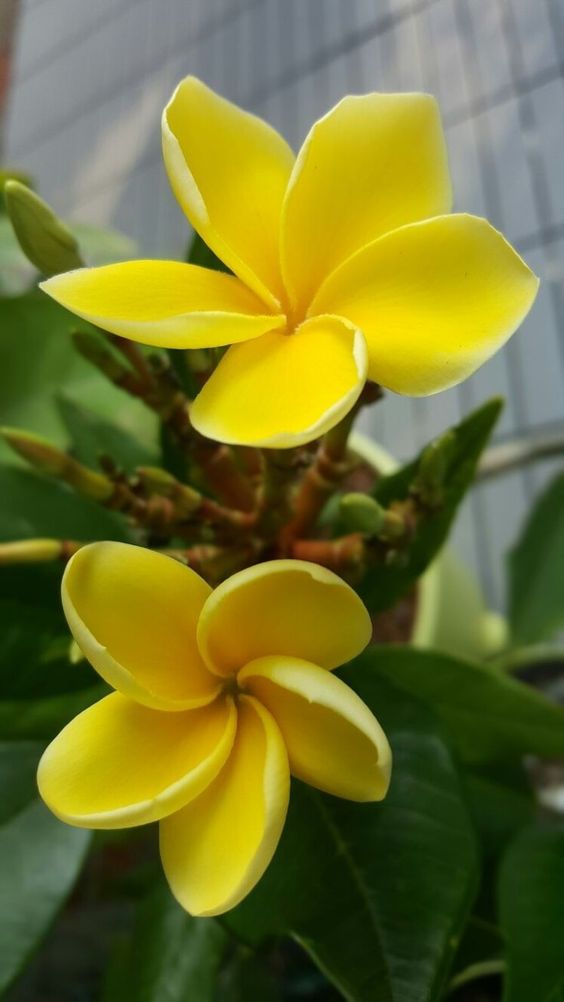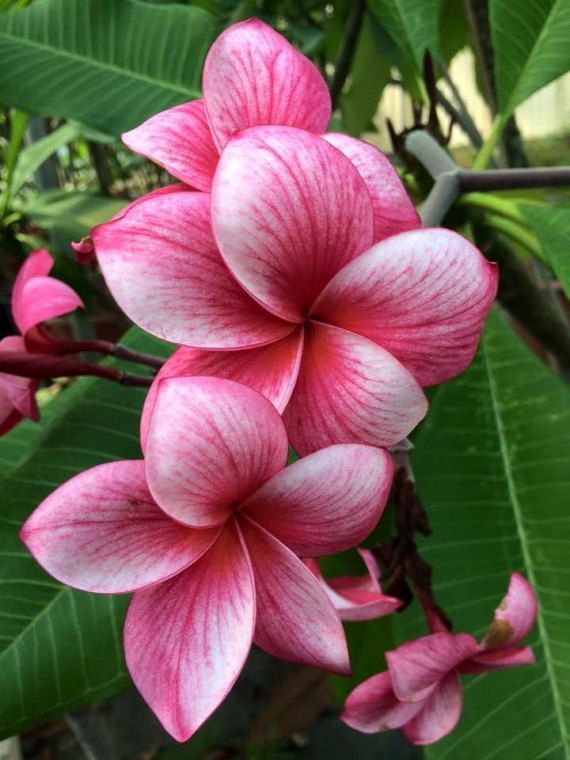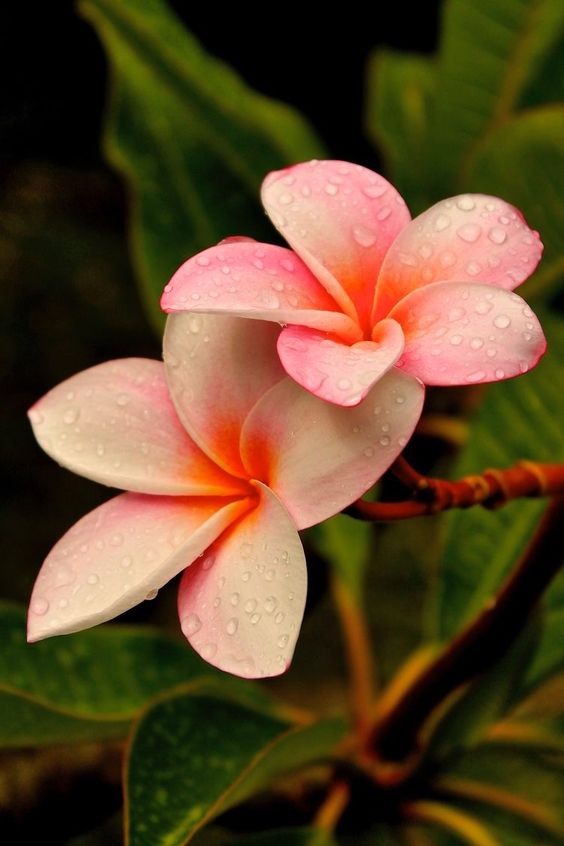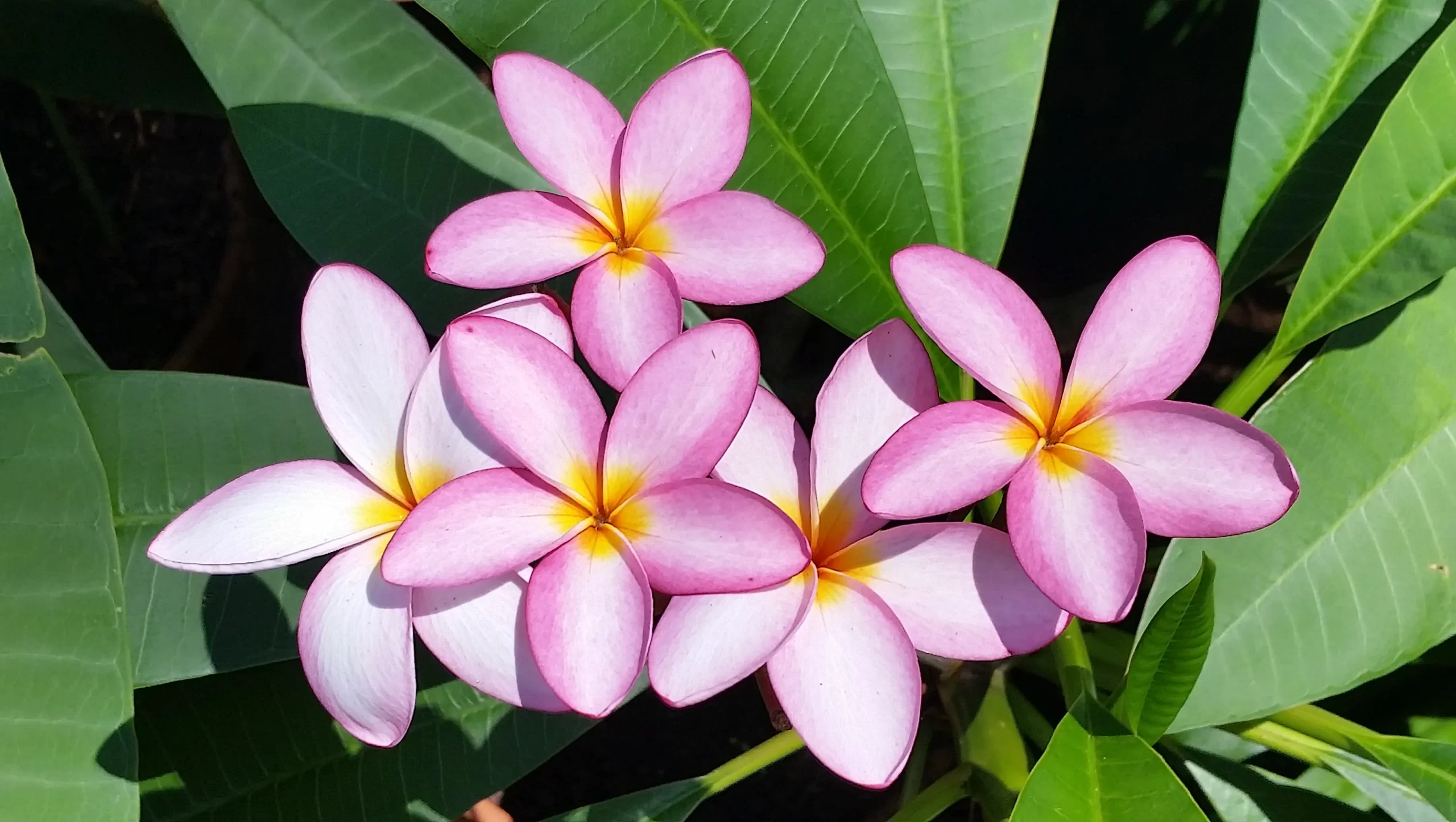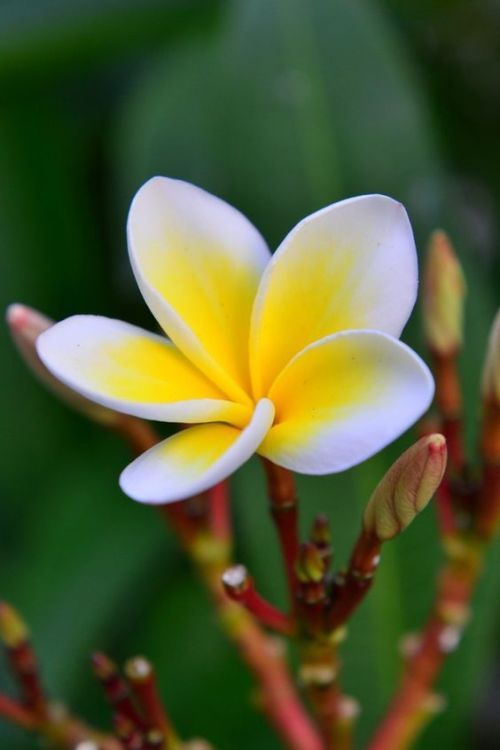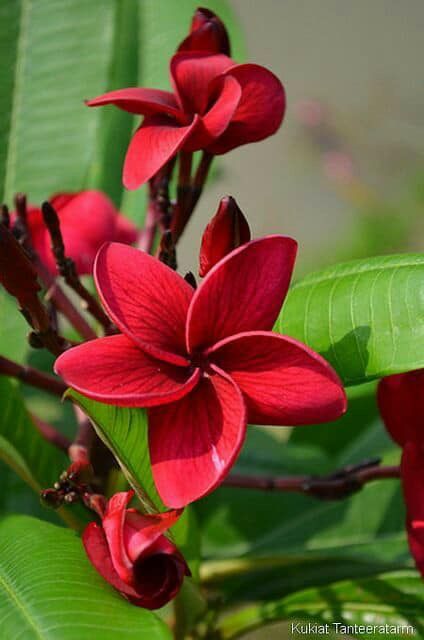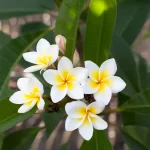Appearance and properties of frangipani
The frangipani is a small tree with a distinctly tropical appearance. The richly scented blooms appear in the warmer months and range in color from white with a yellow center to bright pink, yellow, pink-yellow-orange blends (often referred to as “fruit salad”) and dark shades of mahogany red. Some reds are so dark that they are sometimes referred to as “black”. With age, the plant develops a broad, spreading crown, with branching often starting just above the ground.
The most commonly grown species are deciduous trees. There are evergreen species, but they are generally only suitable for tropical and subtropical regions.
Use of frangipani
Whether grown in the ground or in large pots, no tropical look, resort style, Balinese or modern Australian coastal garden is complete without a frangipani or two. You can even plant a fragrant rainbow! The range of flower colors is enormous and the scent is divine.
Frangipani is excellent for growing on sunny walls, providing cooling shade in the summer while letting the winter sun stream through. She can also be a real problem solver, as she thrives in sandy soil that many plants cannot tolerate.
And if you only have a balcony, you can always have a frangipani! They can also thrive very well in large pots and planters.
How to plant and grow frangipani
Since frangipani is originally from tropical regions, its best performance is achieved in the tropics and subtropics. Protected from cold winds and frost, however, it will also grow well in cooler zones, albeit more slowly.
In cooler areas, choose a north-facing site that creates a suitably warm microclimate. Frangipani will tolerate a wide range of soil types provided drainage is excellent. Avoid locations where the soil can remain wet, especially during the cooler months, and avoid windy spots as frangipani branches are brittle.
Frangipani planting tips
Follow these planting tips to keep your frangipani thriving:
Frangipani will benefit from some extra organic material, such as B. a good quality compost or composted manure that is mixed with the potting soil.
Don’t be surprised if the plant has a very loose root ball when you remove the pot.
Try not to disturb the roots too much as they are easily damaged.
Larger plants will need staking as they are top heavy until established.
Frangipani care tips
Frangipani is a very easy to care for plant. If conditions are dry during the warmer months, water the plant while the leaves and flowers are developing. Avoid watering your frangipani while it is dormant (leafless).
Fertilizing is not necessary but improves performance. Apply a controlled-release fertilizer around the edge of the canopy line in late spring or early summer.
How to prune frangipani
Occasionally you may need to prune your frangipani to limit size, clean up a broken branch, or remove an uncomfortable branch. On older trees, look for and remove branches that have begun to rub or cross, or are no longer producing leaves or flowers.
diseases and pests
Frangipani rust generally occurs just before leaf fall and is evident as discoloration of the leaves on top and orange spots on their undersides. Thoroughly spray all leaf surfaces with a suitable fungicide such as Yates Rose Shield and repeat weekly. Any fallen leaves should be removed immediately, sealed in a plastic bag and disposed of in the regular trash can (not on the compost).
Scale insects are found on stems or leaves. They look like small white or brown lumps. These can easily be treated with a suitable horticultural spray oil.
 careyfashion.com Carey Fashion
careyfashion.com Carey Fashion
